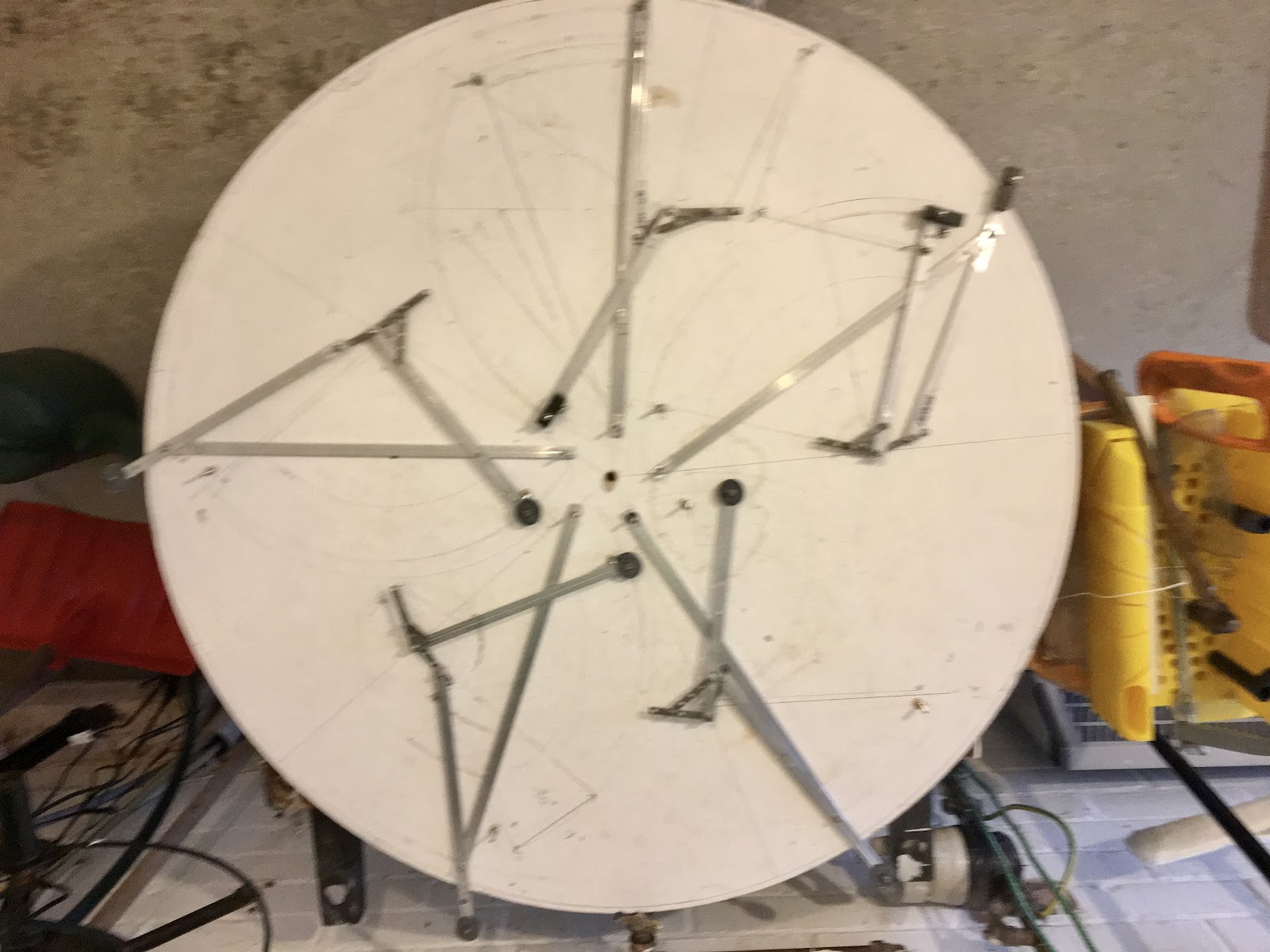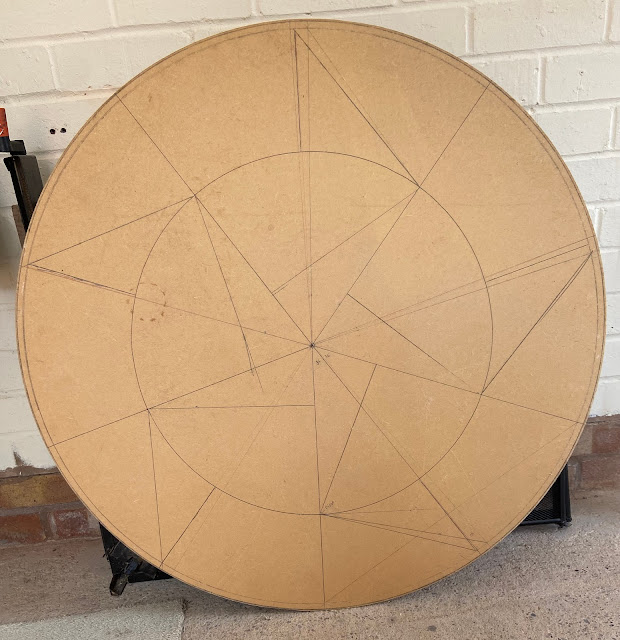I said I wouldn’t show any pics of previous builds, and in fact there aren’t many left but this one (slightly out-of-focus!) was handy. It was taken in 2016 just before moving house. You can see the familiar five mech set up. (Best ignored!)
There follow a few examples of Bessler’s ‘hiding in plain sight’ technique. The picture below appeared in Johann Bessler’s Das Triumpant Orffyrean Perpetual Motion book. It was a second version of the original design which was included in his first booklet, Grundlicher Bericht. There are a few differences between the two versions but mostly I use the second drawing to illustrate my finds.
In the picture note the six columns or pillars, not including the main one supporting the wheel. Two are drawn in three dimensions, numbered 4, but the other four, numbered 12, are two dimensional and their tops are indicated by my short red lines. The latter act as datum points. The two on either side of the central pillar provide pointers to enlarge the circumference of the wheel.
The green line which is extended from the left side of the picture and aligns with the centre of the wheel, indicates one of two possible diameter lines. Two lines each drawn 18 degrees apart from the lower end of the green line conform to Euclid’s pentagram construction advice.
Confirmation is provided by the other two datum points which align with the purple 18-degree line and the hatching lines on the wheel and the capital letter M. If you draw a line similar to the purple line but aligning the left sides of the two red lines, the alignment is perfect with the hash marking in the wheel. I think that both lines finish in the same place but obviously they can’t both do that as well as align perfectly with the hash markings.
Notice that the outer circle now includes the left side of the ‘T’ pendulum, the point of the padlock and touches the bottom and right edges of the rectangle.
Below is a pic of how I worked out the correct position for the two circles
You might think I drew the inner circle first, placed the pentagram within it with five radii extended to the outer circle. But if you do that, you don’t know exactly where the inner circle will be so you have to draw in the outer one first before you can calculate exactly where the inner one will be. To calculate remember that all angles are multiples of 18. Remember that Johann Bessler actually altered his forenames to include the number 5 and 18.
Below I’ve included a picture of my wheel’s baseplate upon which the mechanisms will eventually be attached. The pentagram is drawn in and you will notice an inner circle is included. It is upon this circle that the five pivots are positioned. The drawing is not 100 per cent accurate but will suffice.
www.gravitywheel.com
The next bit is to drill the pivot holes, ready for the the five pivot stubs. The levers are mounted on the pivots. Their range of movement of each weight covers an arc of 90 degrees. There is more to be taken into account here and it’s not visible in the above picture. As the build progresses I’ll show more. Although I’ve shown this configuration before, it still lacks a number of details so far.
For more evidence of the ubiquity of hints about the importance of the number five visit my website at The Orffyreus Code
JC




No comments:
Post a Comment